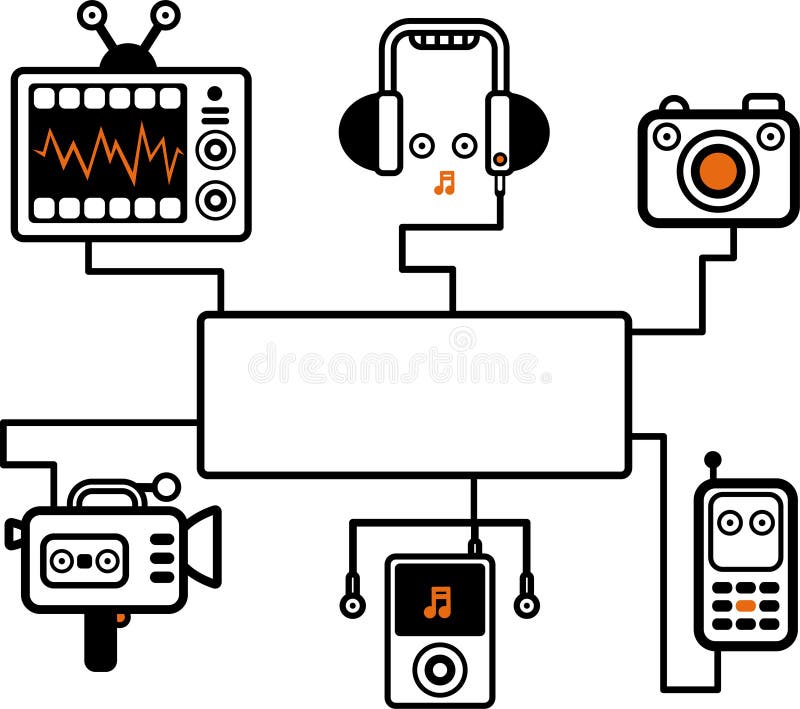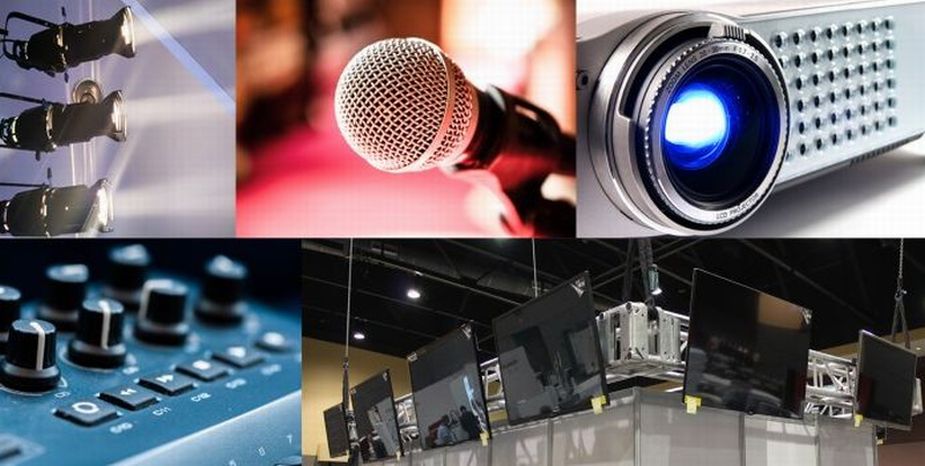How to book audio visual charlotte nc services on time
Understanding the Inclusion of Audio Visual Modern technology in Today's Educational Environments
The combination of audio-visual innovation in academic settings has transformed the teaching and discovering process. Educators currently have access to tools that cater to numerous discovering designs, enhancing student interaction and cooperation. Nonetheless, the incorporation of these technologies offers both opportunities and challenges. Understanding how to effectively apply these tools is essential. What techniques can educators employ to optimize the benefits of audio-visual innovation in their class?
The Development of Audio-Visual Modern Technology in Education
As educational requirements developed over the years, audio-visual innovation underwent significant changes that improved the discovering atmosphere. Originally, tools such as film projectors and slide programs were the key methods of incorporating visual elements into class. These early modern technologies provided teachers with the capability to existing information dynamically, yet they were restricted in accessibility and interactivity.
With the advent of videotape recorder in the 1970s, class started to integrate recorded lessons, widening the scope of academic sources. The introduction of computers in the 1980s more transformed this landscape, enabling the production of multimedia discussions and interactive understanding experiences.
The increase of the net in the 1990s noted a zero hour, allowing real-time access to a wide range of audio-visual products. Today, digital tools such as interactive whiteboards and on the internet understanding platforms remain to improve the instructional experience, cultivating interaction and collaboration among students.
Advantages of Audio-Visual Equipment for Diverse Knowing Styles
Audio-visual devices play a vital function in catering to varied discovering designs by enhancing aesthetic discovering and improving auditory interaction. By incorporating images, video clips, and noise, these technologies create an even more inclusive academic setting. This complex strategy allows teachers to resolve the varied choices and demands of trainees efficiently.
Enhancing Visual Learning
Involvement in the understanding process is significantly boosted through using audio-visual tools, satisfying different learning designs. These tools, such as video clips, infographics, and interactive discussions, give visual stimuli that assist comprehension and retention. Aesthetic students, particularly, take advantage of the unification of images and computer animations, which can streamline intricate concepts and boost understanding. In addition, audio-visual resources can show real-world applications, making finding out more relevant and interesting. By incorporating shade, activity, and sound, instructors can create a dynamic understanding setting that records pupils' focus and cultivates deeper cognitive connections. Ultimately, the tactical usage of audio-visual technology not just sustains visual discovering but likewise enriches the general instructional experience for varied students.
Improving Auditory Interaction
A significant advantage of incorporating audio-visual devices in education is their ability to enhance auditory interaction amongst pupils. These tools, which incorporate multimedia presentations, podcasts, and interactive audio aspects, provide to different discovering designs, especially profiting auditory learners (audio visual charlotte nc). By integrating noise and narration, instructors can produce immersive experiences that catch trainees' attention and enhance comprehension. This interaction is crucial, as it promotes a deeper understanding of the product and promotes retention. In addition, audio-visual devices can assist in joint discovering environments, urging pupils to participate in conversations and share their understandings. Inevitably, the incorporation of audio-visual modern technology not just supports acoustic involvement but also enhances the overall academic experience, making discovering more dynamic and efficient for all pupils
Enhancing Involvement Via Interactive Learning

Gamification elements, such as tests and simulations, can boost inspiration and retention, making discovering more enjoyable and reliable. These techniques not only boost cognitive engagement however also accommodate varied knowing designs, guaranteeing that all trainees can participate meaningfully. As a result, interactive learning atmospheres cultivate a sense of community and belonging, ultimately causing enhanced scholastic end results. Through the combination of audio visual modern technology, educators can change standard classrooms right into vivid rooms where students flourish and proactively shape their academic trips.
Connecting Theory and Exercise With Multimedia Resources
Multimedia resources act as a vital web link in between theoretical concepts and sensible application in educational setups. By improving engagement, facilitating joint discovering experiences, and sustaining diverse learning designs, these tools create a much more inclusive and vibrant discovering setting - audio visual charlotte nc. This approach not only fosters deeper understanding but also prepares pupils for real-world difficulties

Enhancing Interaction Via Multimedia
Interaction in instructional setups substantially enhances when instructors incorporate multimedia resources into their mentor strategies. The usage of video clips, podcasts, and interactive presentations improves the learning experience, enabling students to attach with the product on several levels. Multimedia resources satisfy various discovering styles, giving visual, auditory, and kinesthetic stimuli that can hold pupils' focus better than traditional lecture techniques. Furthermore, these resources can simplify complex ideas, making them a lot more obtainable and remarkable. By integrating multimedia, instructors can develop a dynamic class setting that cultivates curiosity and motivates students. Inevitably, the critical use audio-visual innovation serves to link the space between academic understanding and useful application, enriching the academic experience for both teachers and students.
Helping With Collaborative Understanding Knowledge
Many studies indicate that collective learning experiences substantially boost student results when incorporated with multimedia sources. Multimedia devices assist in interaction among trainees, enabling them to involve in analytic and essential assuming jointly. By utilizing video conferencing, joint systems, and interactive presentations, educators produce environments favorable to synergy and shared discovering. These innovations make it possible for students to communicate their ideas successfully and get immediate feedback, promoting a deeper understanding of the subject. Additionally, multimedia sources can present intricate ideas in more absorbable formats, advertising conversation and cooperation. Consequently, the combination of collective discovering and audio-visual innovation not just improves the academic experience however also prepares pupils for real-world teamwork characteristics, stressing the importance of collaboration and collective knowledge building and construction.
Sustaining Diverse Knowing Styles
While traditional training approaches commonly cater to a restricted variety of discovering preferences, the assimilation of audio-visual technology provides a much more inclusive approach to education and learning. By employing multimedia resources such as videos, interactive simulations, and digital discussions, teachers can address different finding out designs, consisting of visual, acoustic, and kinesthetic. This flexibility allows for separated guideline, making it possible for pupils to engage with material in ways that resonate with their individual choices. Additionally, audio-visual devices can promote deeper understanding by supplying multiple depictions of intricate principles. Because of this, pupils that might fight with standard techniques can discover alternative paths to success, fostering a more equitable knowing environment that sustains scholastic accomplishment for all learners.
Obstacles in Applying Audio-Visual Modern Technology
Although audio-visual innovation holds fantastic promise for enhancing academic experiences, its implementation frequently encounters considerable challenges. One primary problem is the financial problem associated try these out with purchasing and maintaining such equipment, which can stress budgets, especially in underfunded establishments. Additionally, poor training for instructors can prevent reliable integration, leaving them ill-prepared to use the technology fully. Technical concerns, such as software application breakdowns and compatibility troubles, may likewise disrupt lessons and frustrate both instructors and trainees. Differing degrees of pupil access to innovation outside the classroom can develop disparities in learning chances. Lastly, the capacity for over-reliance on technology may detract from vital mentor methods, ultimately restricting the instructional experience. Dealing with these challenges requires an extensive technique, consisting of adequate funding, specialist advancement, and fair accessibility to resources, to assure that audio-visual technology can be leveraged efficiently in today's educational settings.
Ideal Practices for Integrating Modern Technology in the Classroom

Additionally, cultivating an interactive environment through collective tools motivates student involvement and involvement. Utilizing varied audio-visual resources accommodates various discovering styles, accommodating aesthetic, auditory, and kinesthetic learners. On a regular basis evaluating the influence of modern technology on trainee knowing helps educators improve their approaches and adapt to transforming needs. Ultimately, involving trainees in the choice of modern technology promotes possession and inspiration. By adhering to these best methods, instructors can create a vibrant classroom atmosphere that effectively integrates technology and boosts the academic experience for all trainees.
The Future of Audio-Visual Innovation in Education
As classrooms increasingly welcome technology, the landscape of audio-visual devices in education and learning proceeds to develop (audio visual charlotte nc). Future advancements are anticipated to concentrate on greater interactivity and customization, permitting educators to customize finding out experiences to individual student demands. Advancements such as enhanced fact (AR) and virtual reality (VR) will likely supply immersive discovering environments, enhancing trainee involvement and understanding
Fabricated intelligence (AI) is positioned to play a significant role in audio-visual innovation by supplying real-time comments and adaptive knowing paths. This integration may aid teachers recognize and address student difficulties a lot more efficiently. Cloud-based systems will facilitate less complicated access to resources check and collaboration among trainees and educators, regardless of location.
Along with these technical developments, professional advancement for educators will be vital, guaranteeing they are geared up to utilize these devices effectively. Overall, the future of audio-visual innovation in education guarantees to develop more dynamic, inclusive, and impactful understanding experiences.
Often Asked Questions
How Can Educators Pick the Right Audio-Visual Devices for Their Classrooms?
Picking suitable audio-visual tools needs instructors to evaluate their instructional goals, think about student requirements, review available modern technology, and seek referrals from peers or experts, guaranteeing devices successfully boost understanding and involvement within their particular class setting.
What Budget plan Factors to consider Are There for Executing Audio-Visual Technology?
Budget plan factors to consider for applying audio-visual technology include preliminary acquisition expenses, maintenance expenditures, training for staff, and potential software application licensing costs. Furthermore, long-lasting financial investment in updates and replacements must also be factored into financial preparation.
Exist Details Training Resources for Educators on Audio-Visual Tools?
Numerous organizations supply training resources for instructors on audio-visual tools, consisting of on the internet programs, workshops, and training guides. These resources intend to enhance instructors' abilities and self-confidence in successfully incorporating modern technology into their training practices.
How Do We Gauge the Performance of Audio-Visual Modern Technology in Knowing?
Gauging the performance of audio-visual innovation in discovering entails examining pupil interaction, understanding, retention prices, and general academic efficiency. Studies, assessments, and observational research studies can offer valuable insights into its effect on instructional end results.
What Prevail Misunderstandings Regarding Audio-Visual Technology in Education?
Usual misunderstandings concerning audio-visual modern technology in education and learning consist of the idea that it assures engagement and finding out outcomes, as well as the presumption that all pupils benefit just as, overlooking individual understanding choices and important link needs.